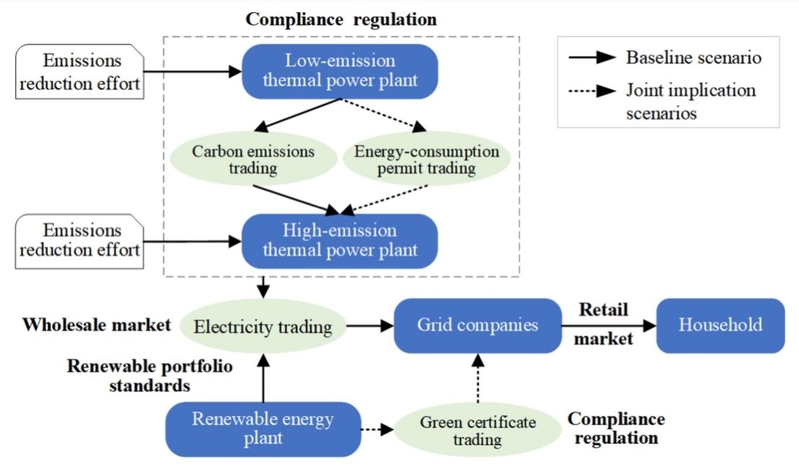Research on the impact of multiple energy transition policies has often focused on their individual effects on electricity pricing and market operations, yet the interplay between these policies remains underexplored. A recent study by Yanfang Zhang proposed a Carbon-Energy-Green-Electricity (CEGE) scheme, which incorporated carbon emissions trading (CET), renewable portfolio standards (RPS), energy-consumption permits (ECP), and tradable green certificates (TGC) together within China's energy landscape and analysed how the CEGE scheme affects electricity prices and social welfare. This work is published in Energy Economics, one of the top journals in economics related to energy policy and rated as 3 star according to ABS ranking list. The abstract of the paper is copied below.
In exploring the intricate dynamics of China's energy transition towards a national certificate trading market, this study harnesses a two-stage game model to unravel the nuanced decision-making within the intertwined carbon emissions trading, energy-consumption permit trading, and electricity markets. A novel industrial chain-based policy framework, i.e., the Carbon-Energy-Green-Electricity (CEGE) scheme, is introduced to address the complexity inherent in aligning these trading markets towards carbon neutrality goals. Findings reveal that the current isolated energy transition policies lead to increased electricity prices and imposes redundant regulatory burdens on power companies. By advocating for the CEGE scheme, the study presents a strategic approach to alleviate these challenges, highlighting its potential to lower electricity costs and foster more efficient carbon reduction efforts. Furthermore, it underscores the importance of integrating energy transition policies, including CET, ECPTS, the renewable portfolio standards (RPS), and the tradable green certificate program (TGC), to enhance renewable energy adoption, offering a path to relieve financial pressures on households while supporting broader environmental and economic welfare improvements.

Figure The framework of the game model with strategic plants and grid companies
If you are interested in the research, please read the paper:
Zhang, Y., Gao, Q., Li, H., Shi, X., & Zhou, D. 2024. Navigating the energy transition with the Carbon-Energy-Green-Electricity scheme: An industrial chain-based approach for China’s carbon neutrality. Energy Economics, 140, 107984. DOI: 10.1016/j.eneco.2024.107984.
A full version of this article could be viewed at:
https://www.sciencedirect.com/science/article/pii/S0140988324006923?via%3Dihub

Nanjing University of Aeronautics and Astronautics
Copyright 2017 | All Rights Reserved with NUAA
